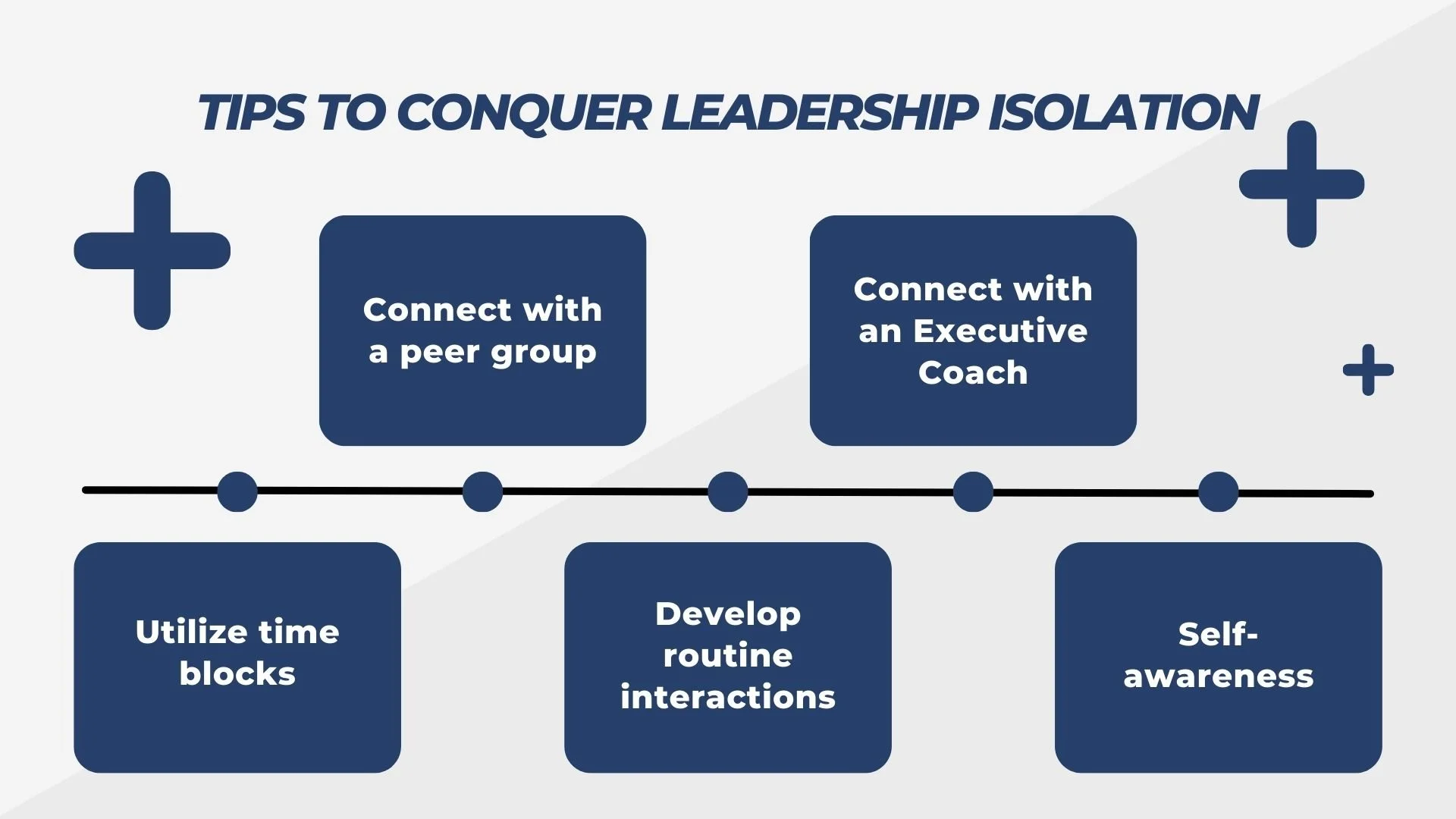Conquering Leadership Isolation
Shakespeare wrote, “Uneasy lies the head that wears the crown.” Today, it is more common to say “It’s lonely at the top.” How can one hold a top position and avoid the trap of isolation? Leadership isolation is not loneliness; isolation means a leader is not connected to the organization.
Issues within the company
It is difficult to establish an authentic connection between the leader and employees. Employees often look to the leader out of self-interest, with the belief that impressing the boss will lead to some tangible benefit. The head that wears the crown is likely to grow skeptical of any approach, leading to isolation.
For example, many people are interested in impressing their supervisor. Without being aware, many will take that desire to impress and put forward a false front. Beside attempting to impress, there is also a fear of consequences for many employees. The result is the same; a false impression is given in an effort to be noticed by those in authority. It can be taken so far that employees attempt to hide failures to avoid disappointing supervisors.
Those closest to the leader may be loyal to the person. In an attempt to help their boss, they may function as a gatekeeper and filter negative information. It is also common for those who interact regularly to have difficulty discerning between a suggestion and a command. When those employees follow every suggestion, it gives the impression that the employee is not authentically thinking for themselves. It is no wonder that leaders find it difficult to discern which employees are attempting to curry favor.
What is the impact of leadership isolation?
When leaders are shielded from accurate information, it will negatively impact decision making and leadership effectiveness. Efforts to shield a leader from bad news, regardless of rationale, will hurt the leader and the company. Other leaders may not receive frank feedback. CEOs who deal with isolation are more likely to make risky strategic moves as input from others is dismissed. Over 61% of executives surveyed believe isolation has impacted their performance.
Is the solution within the company or the leader?
YES! Solutions involve adjustments for the leader and for the company. Some solutions are within the company, but they are still within the purview of the leader. Executives have influence over the whole organization, so company culture changes are crucial to conquering leadership isolation.
Attacking leadership behaviors within the company
The concept of “caught more than taught” means leaders will model behavior that demonstrates approachability, transparency, and authenticity. Over time, consistent modeling of these behaviors will be contagious. If the leader does not actively exhibit these actions, the organization will follow in those footsteps.
The head that wears the crown is responsible for creating an environment where feedback is welcomed and valued. The television show Undercover Boss is one way to address leadership isolation. This idea allows a leader to engage with employees to discover real issues. If going undercover is not practical, the principle of taking the time to meet employees where they are to understand the challenges they face leads to a more connected leader.
The most important strategy to combat isolation is to strengthen psychological safety, described by Amy Edmonson as an environment in which candor is expected and won’t be penalized. In a recent MIT Sloan Management Review article, Edmonson shared a case study in which a Nordic investment bank saw a 25% increase in revenue after skills training in psychological safety. Psychological safety brings an increased sense of belonging, which counters isolation. Organizations with greater psychological safety improve performance.
An open-door policy seems to be a good antidote to isolation. The challenge is that most open-door policies are not as effective. While the door may be open, it is easy to unconsciously communicate “Do Not Disturb.” Even a momentary message will reverberate for some time. Instead, get out of the office and into an accessible and approachable environment. It takes time to establish that a visit from the boss is an invitation rather than an inspection. Since the pandemic, there has been an increase in organizations providing resources to support employee well-being. Modeling the utilization of these resources creates a vulnerability that fosters approachability.
Attacking leadership behaviors within the leader
A first step in conquering leadership isolation is self-awareness. Recognize that isolation is a real issue that will have a negative impact if not addressed. Taking the time to create habits and routines that allow you to control your own thermostat will better position yourself to identify feelings of isolation and to take action. This includes being aware of decision fatigue. Create time blocks to think strategically. This routine helps ensure you have a clear mind when making critical decisions.
A common method for leaders to connect is through peer groups. One way to raise awareness of this issue is connecting with others facing similar challenges. Another system of support that has a tremendous return on investment is coaching. It has been proven that executive coaching increases relationships with key personnel and improves job satisfaction.
Attacking leadership isolation has a far reaching impact. By nurturing a psychologically safe environment, employee satisfaction and engagement will both increase. The overall culture of the organization will be more aligned with the company’s core values. Self-awareness and some leadership behavior changes will increase personal well-being. Leadership effectiveness is multiplied when the head that wears the crown is not alone.
#LeadershipIsolation #DecisionFatigue #Leadership #ProfessionalDevelopment #PsychologicalSafety #PersonalGrowth #CoreValues #LeadershipDevelopment #Habits #Routines #ExecutiveCoaching #Connection



